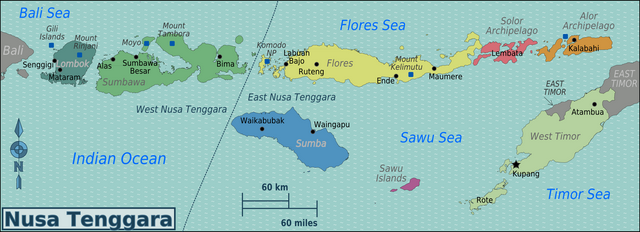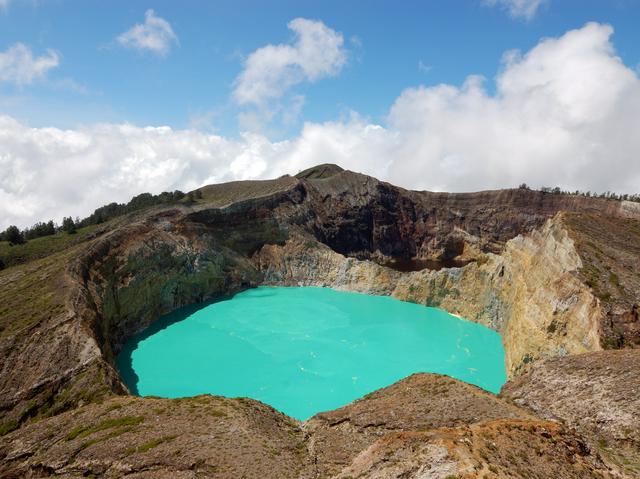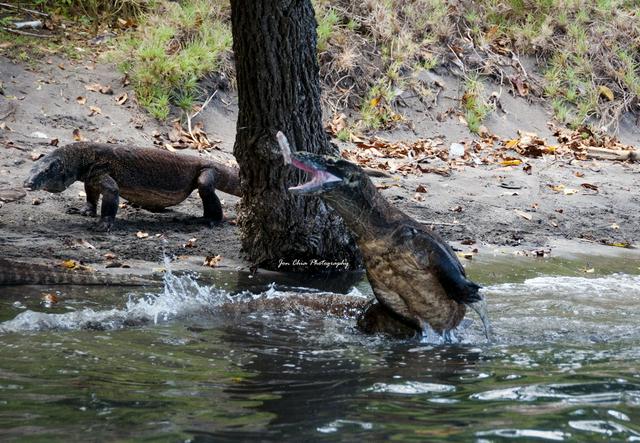Nusa Tenggara ("Southeast Islands"), also known as the Lesser Sunda Islands, is a region in southeastern Indonesia.
Formerly little more than afterthought for most Bali-bound travellers, this region is now attracting more and more visitors, with Komodo National Park close to Flores island and Lombok leading the way.
 Nusa Tenggarra is administratively divided into two provinces:
Nusa Tenggarra is administratively divided into two provinces:
While Bali is geographically a part of the archipelago, it is covered in a separate article.
- Ende. — lazy main city in Flores
- Kupang. — the capital of East Nusa Tenggara, in the western half of Timor
- Labuanbajo. — launching point from Flores to Komodo Island, diving and snorkeling
- Mataram. — the capital of West Nusa Tenggara, in Lombok
- Maumere. — the main transport hub in Flores
- Senggigi. — the main tourist town in Lombok
- Sumbawa Besar. — the largest city in Sumbawa
- Waingapu. — the main city of Sumba and gateway to this most mysterious of islands
- Waikabubak. — home of the pasolas and some truly stunning beaches in West Sumba.
Ende. — lazy main city in Flores
Kupang. — the capital of East Nusa Tenggara, in the western half of Timor
Labuanbajo. — launching point from Flores to Komodo Island, diving and snorkeling
Mataram. — the capital of West Nusa Tenggara, in Lombok
Maumere. — the main transport hub in Flores
Senggigi. — the main tourist town in Lombok
Sumbawa Besar. — the largest city in Sumbawa
Waingapu. — the main city of Sumba and gateway to this most mysterious of islands
Waikabubak. — home of the pasolas and some truly stunning beaches in West Sumba.

- Gili Islands. — three gorgeous tiny islands perched off Lombok, formerly a backpacker mecca and now fast going up-market destination
- Komodo National Park. — home of the Komodo dragon, a very rich marine fauna and magnificent remote landscapes
- Mount Tambora. — a seldom visited volcano in the remotest area of Sumbawa
- Mount Rinjani. — popular with volcano climbers and visitors to Lombok
- Moyo. — national marine park with superb diving and home to a remarkable Aman resort
Gili Islands. — three gorgeous tiny islands perched off Lombok, formerly a backpacker mecca and now fast going up-market destination
Komodo National Park. — home of the Komodo dragon, a very rich marine fauna and magnificent remote landscapes
Mount Tambora. — a seldom visited volcano in the remotest area of [[Sumbawa]]
Mount Rinjani. — popular with volcano climbers and visitors to [[Lombok]]
Moyo. — national marine park with superb diving and home to a remarkable Aman resort
Nusa Tenggara is one of the least developed and least visited parts of Indonesia. But United Nation World Tourist Organization (UNWTO) acknowledged Indonesia as an example of success in developing tourism. In 2016 East Nusatenggara got 6 medals from 10 categories of Anugerah Pesona Indonesia 2016. Gold medal of Most Popular Surfing Spot of Nemberala Beach, Rote Ndao Regency; Gold medal of Most Popular Cleanliness of Nihiwatu Beach, West Sumba Regency; Gold medal of Most Popular of Historical Site of Ende Bung Karno (Proclamator and the first Indonesia President) Site; Gold medal of Most Popular Diving Site of Alor Island, Alor Regency; Silver medal of Most Popular Attraction of Pasola, Southwest Sumba Regency; Bronze medal of Most Popular Highland of different color of three lakes/calderas of Mount Kelimutu, Ende.
While the islands of Lombok and Sumbawa have a majority of Muslim inhabitants, the vast majority (90%) of the rest is Christian, with a strong Hindu presence on Lombok and a good number of remnant aspects of animist belief. Nusa Tenggara has been largely spared the religious conflicts of nearby Sulawesi and Maluku.
The Wallace line, the boundary between the Asian and Australian ecosystems, passes through the region, between Bali and Lombok. Therefore, Nusa Tenggara is part of Wallacea, a transitional ecozone, identified by both the WWF and Conservation International as a global conservation priority area.
Bahasa Indonesia is spoken throughout the region, along with a host of regional languages. English is understood in some of the larger towns and cities, in particular those with significant tourist infrastructure. Outside of those places, do not expect English to be either spoken or understood. Dutch may be spoken by some seniors.

- Komodo dragon. The Komodo dragon, which lives in Rinca and Flores as well as Komodo islands, is the largest lizard in the world. Tours of are available where dragons can be seen in the wild. Tourists must be accompanied by park rangers who use forked wooden sticks to fend off any approaching dragons, and provide information about the islands and wildlife. The practice of feeding dragons stopped in 1992.
- See the three varying colored lakes at Kelimutu on Flores.
Komodo dragon. The Komodo dragon, which lives in [[Rinca]] and [[Flores (Indonesia)|Flores]] as well as [[Komodo]] islands, is the largest lizard in the world. Tours of are available where dragons can be seen in the wild. Tourists must be accompanied by park rangers who use forked wooden sticks to fend off any approaching dragons, and provide information about the islands and wildlife. The practice of feeding dragons stopped in 1992.
- Pasolas, festivals with ritual battles between warriors, in western Sumba in February or March.
- Swimming in the Flores Sea between Sumbawa and Flores, en route to or from one of the islands in Komodo National Park.
With a drier climate, there is less rice and more sago, corn, cassava, and taro compared to central and western Indonesia. Fish is popular including sepat, which is shredded fish in coconut and young-mango sauce.
Jus pokat (avocado juice), often including a swirl of chocolate, is generally very good.
Komodo Dragons, at up to 3 m (10 ft) in length, are more than capable of killing a human with ease, although human predation is rare. Zoologists formerly believed that the main problem was the dragon's diseased-filled bite from the rampant bacteria residing in their mouth. More recently theories have been put forward that the Komodo Dragon is actually venomous, and that the biggest problem when bitten is shock and massive blood loss due to the ferocity of the bite. Whichever, getting bitten is not a good thing.
The dragon usually bites a larger animal and then waits for the infection to kill it. So, despite the fact that being actually eaten is unlikely, the bite itself can be deadly. Keep at a considerable distance and never enter dragon territory alone. If you use basic common sense you should have a wonderful time viewing these magnificent animals. The absence of crocodiles on Komodo Island (due in part to a lack of suitable habitat) leave the Komodo Dragons with no natural predators.
Saltwater crocodiles (Crocodylus porosus) also reside in most of this area, however they are not found on Komodo. The saltwater crocodile is the largest of all living crocodilians and the average size for an adult male is 5.2 m (17 ft) (although the largest saltwater crocodile on record was 8.8 m (29 ft) in length, from northern Queensland). They are known throughout their range as man-eaters and account for many human deaths every year. This can all be avoided by using basic common sense. Never swim in the ocean near a river mouth, in swamps or in large rivers. Never clean fish near the water or frequent the same spot at a river over a prolonged period of time, saltwater crocodiles are known to memorise a potential prey item's patterns for days or weeks at a time before attacking.
